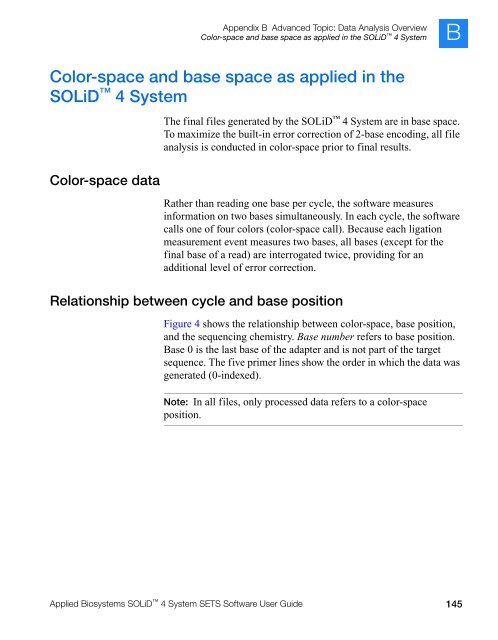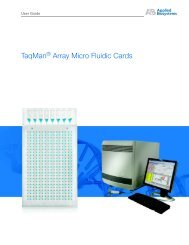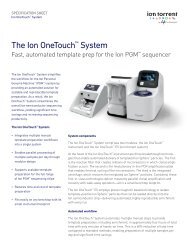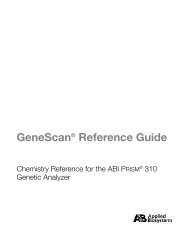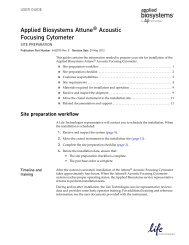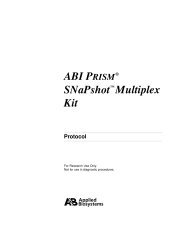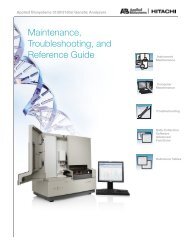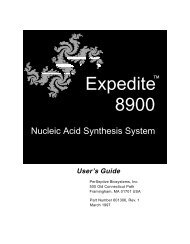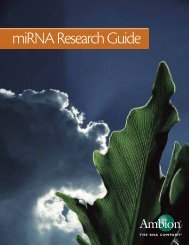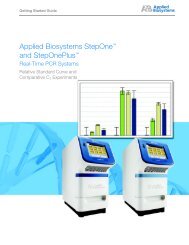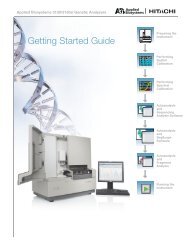Applied Biosystems SOLiD™ 4 System SETS Software User Guide ...
Applied Biosystems SOLiD™ 4 System SETS Software User Guide ...
Applied Biosystems SOLiD™ 4 System SETS Software User Guide ...
You also want an ePaper? Increase the reach of your titles
YUMPU automatically turns print PDFs into web optimized ePapers that Google loves.
Appendix B Advanced Topic: Data Analysis Overview<br />
Color-space and base space as applied in the SOLiD 4 <strong>System</strong> B<br />
Color-space and base space as applied in the<br />
SOLiD 4 <strong>System</strong><br />
Color-space data<br />
The final files generated by the SOLiD 4 <strong>System</strong> are in base space.<br />
To maximize the built-in error correction of 2-base encoding, all file<br />
analysis is conducted in color-space prior to final results.<br />
Rather than reading one base per cycle, the software measures<br />
information on two bases simultaneously. In each cycle, the software<br />
calls one of four colors (color-space call). Because each ligation<br />
measurement event measures two bases, all bases (except for the<br />
final base of a read) are interrogated twice, providing for an<br />
additional level of error correction.<br />
Relationship between cycle and base position<br />
Figure 4 shows the relationship between color-space, base position,<br />
and the sequencing chemistry. Base number refers to base position.<br />
Base 0 is the last base of the adapter and is not part of the target<br />
sequence. The five primer lines show the order in which the data was<br />
generated (0-indexed).<br />
Note: In all files, only processed data refers to a color-space<br />
position.<br />
<strong>Applied</strong> <strong>Biosystems</strong> SOLiD 4 <strong>System</strong> <strong>SETS</strong> <strong>Software</strong> <strong>User</strong> <strong>Guide</strong><br />
145


